Abstract
Rabbits produce hard and soft faeces in a circadian rhythm. This study was undertaken in order to examine the motor function of the colon in relation to the formation of these two types of faeces. Colonic motility was measured in unanaesthetized rabbits using strain-gauge transducers and simultaneous radiography. Three types of contractions were found in the rabbit proximal colon: haustral activity, segmental activity, and mass peristalsis. Distinctly different motor patterns were observed during the formation of hard and soft faeces. When hard faeces were produced, the motor activity of the proximal colon was enhanced. It consisted of segmental and haustral activity. The segmental contractions separated the digesta into faecal pellets and forced them slowly aborad, whereas the movements of the haustra carried the liquid contents back towards the caecum. When soft faeces were produced haustral and segmental activity was reduced and transfer of the digesta through the proximal colon was accelerated by mass movements. In contrast to the proximal colon, the motility of the distal colon was enhanced during the formation of soft faeces and decreased during the production of hard faeces. The results support the concept that hard faeces are chiefly produced by a separation of liquids and solids and by a retrograde transfer of liquid digesta rather than by an increased absorption of water.
Full text
PDF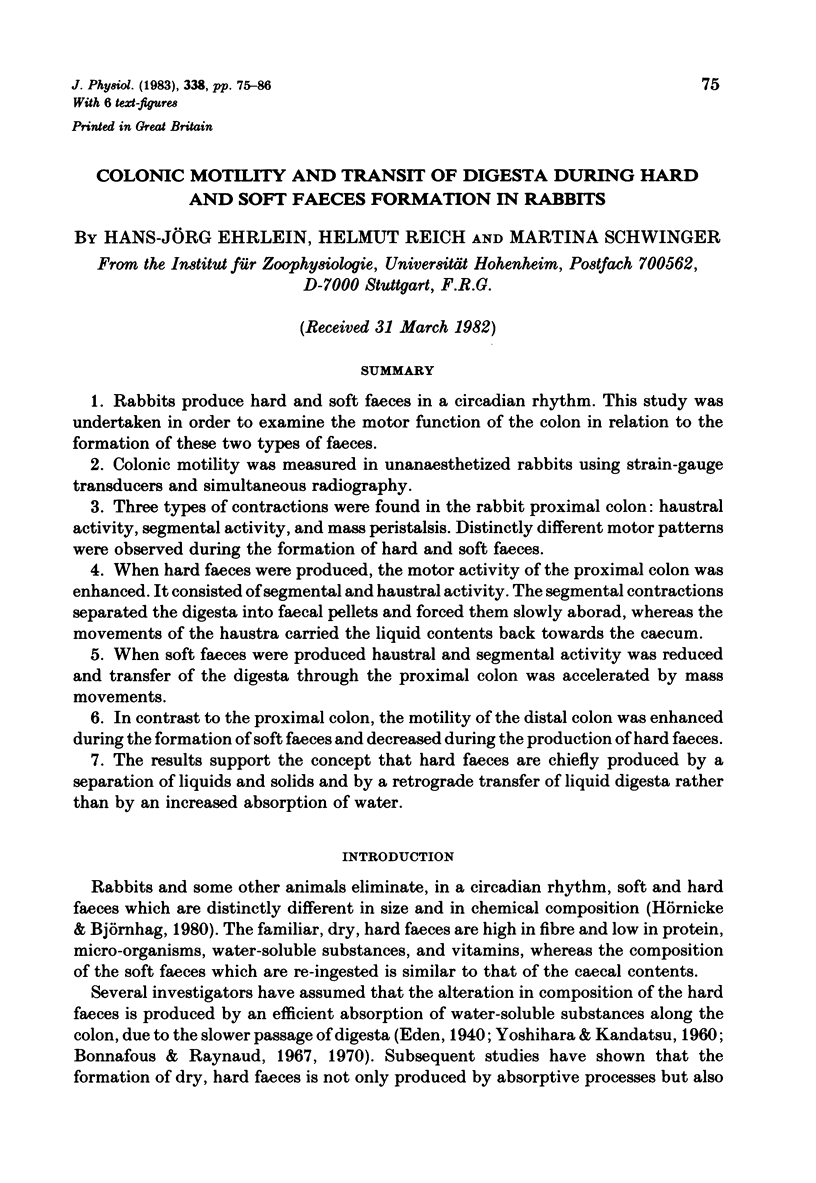
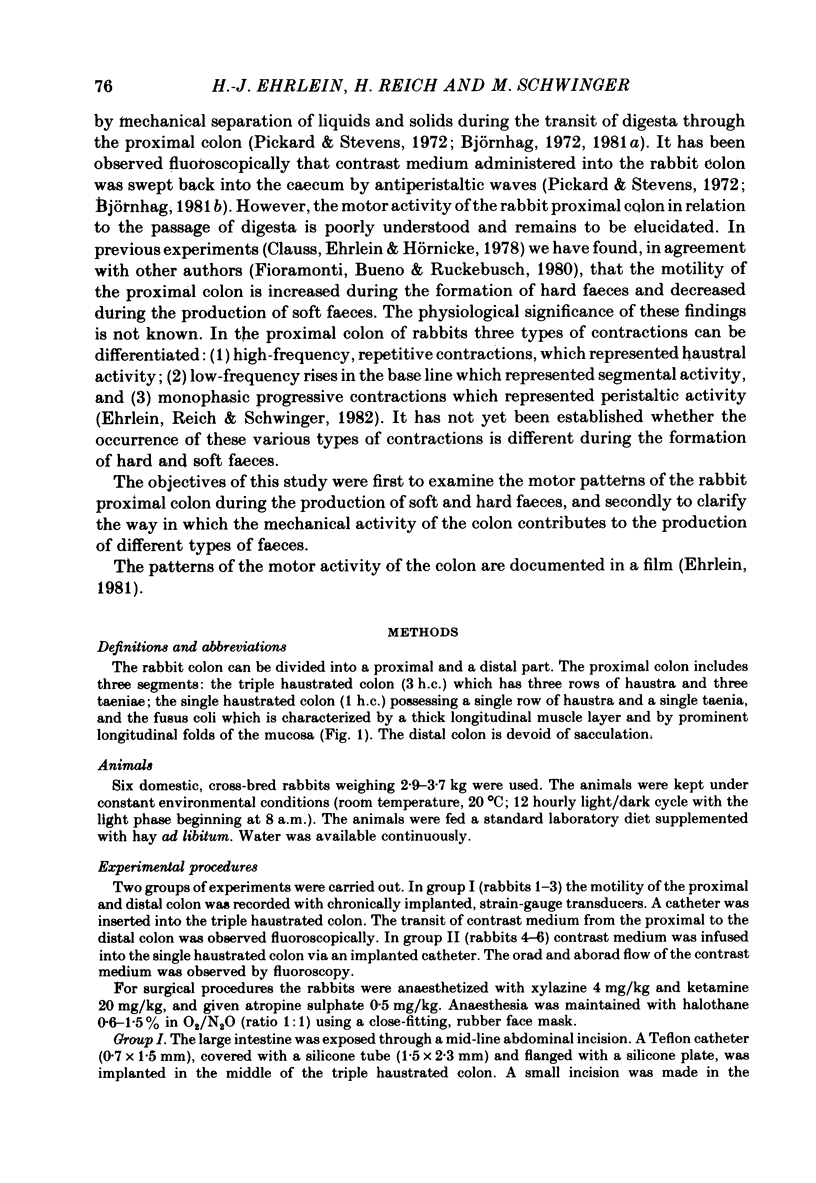
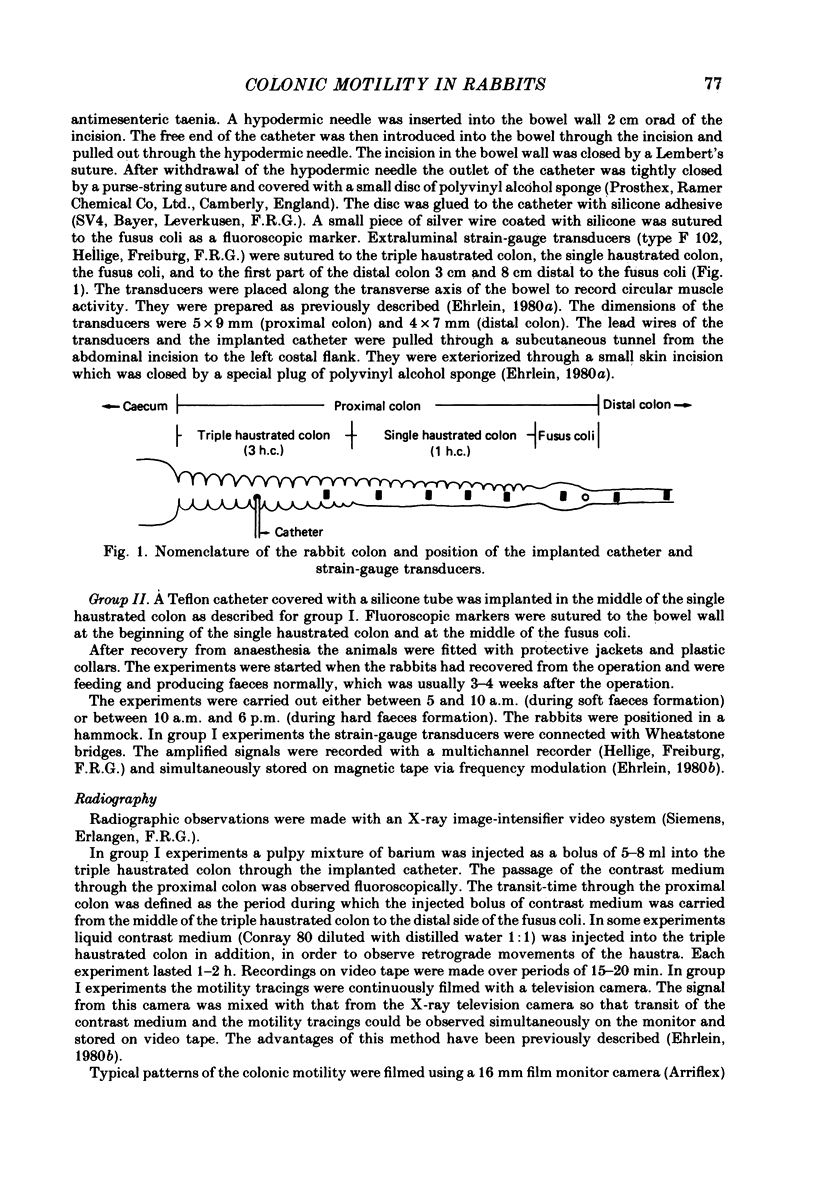
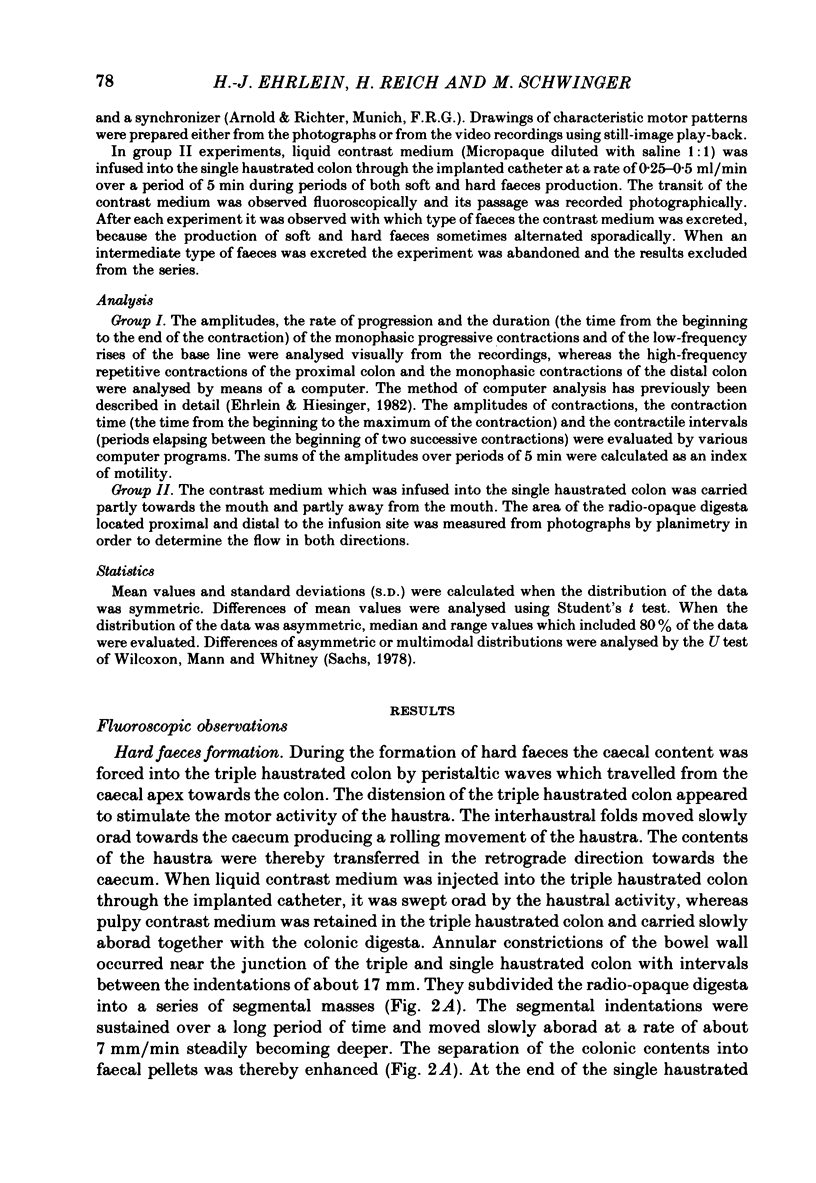
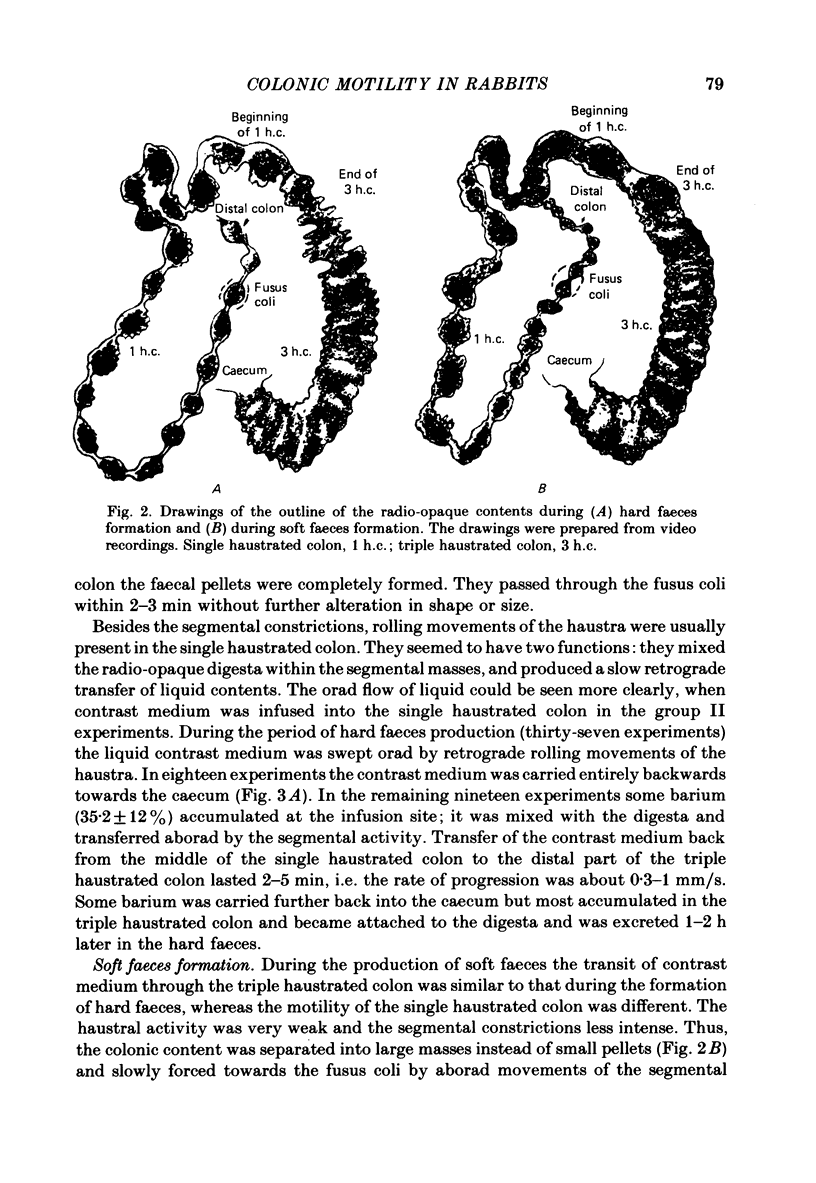
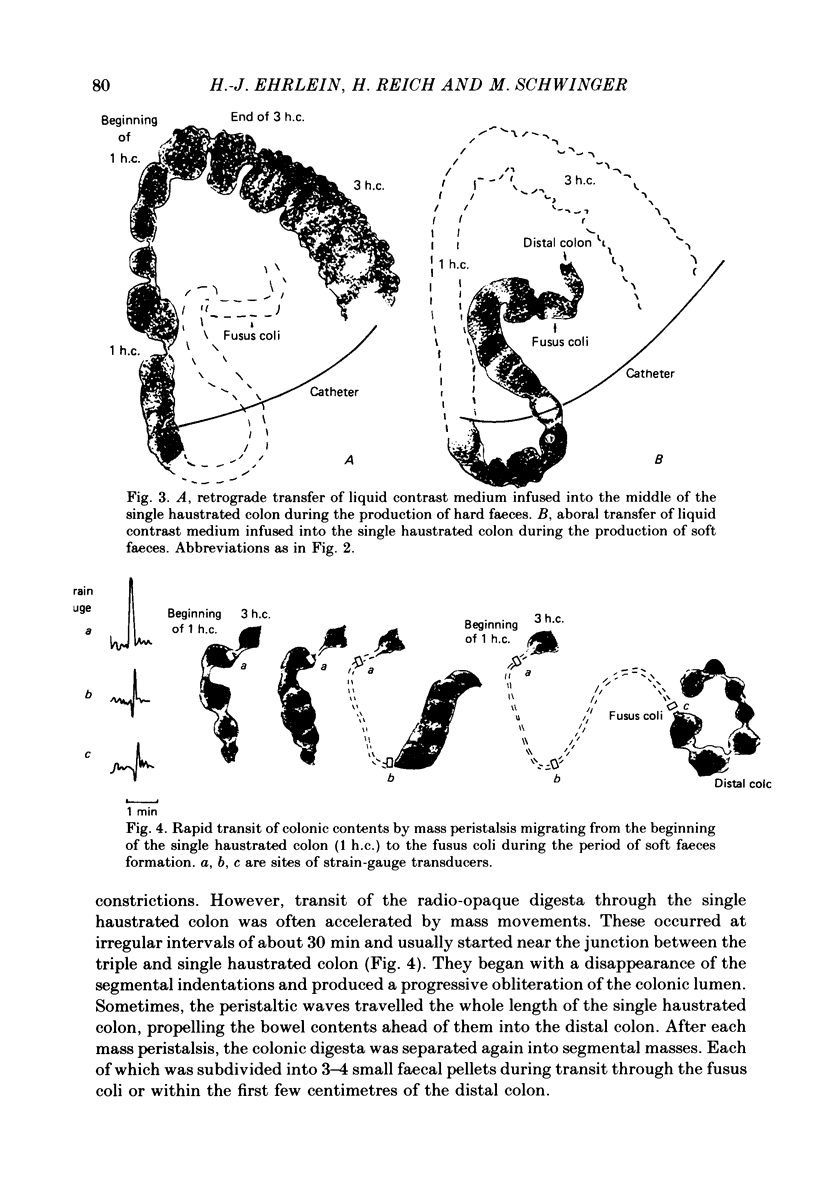
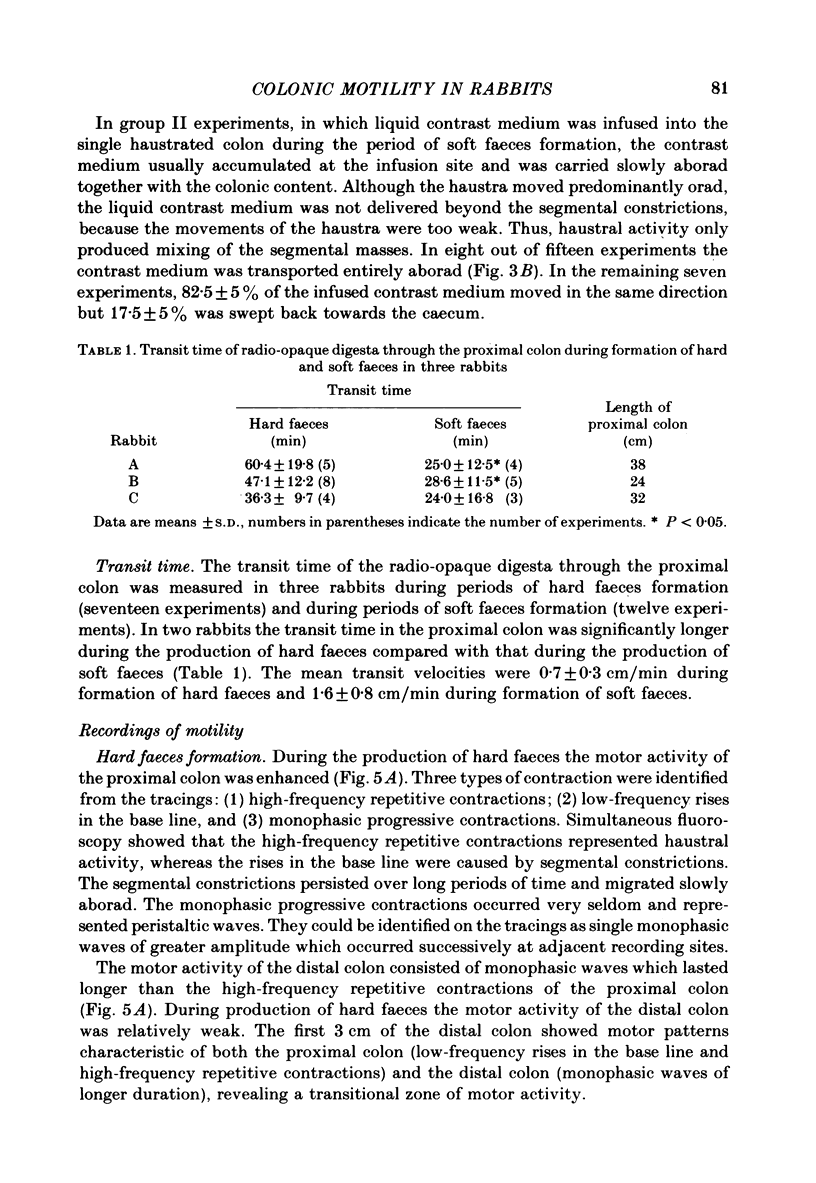
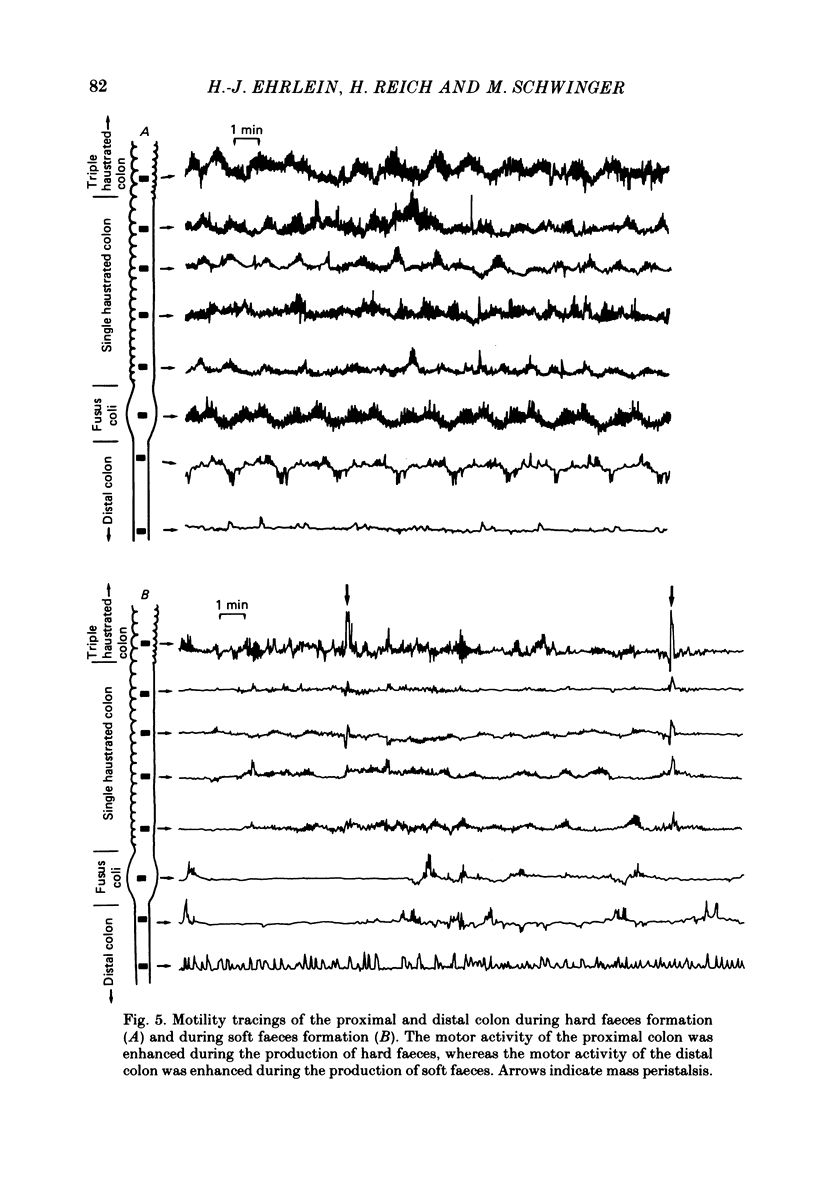
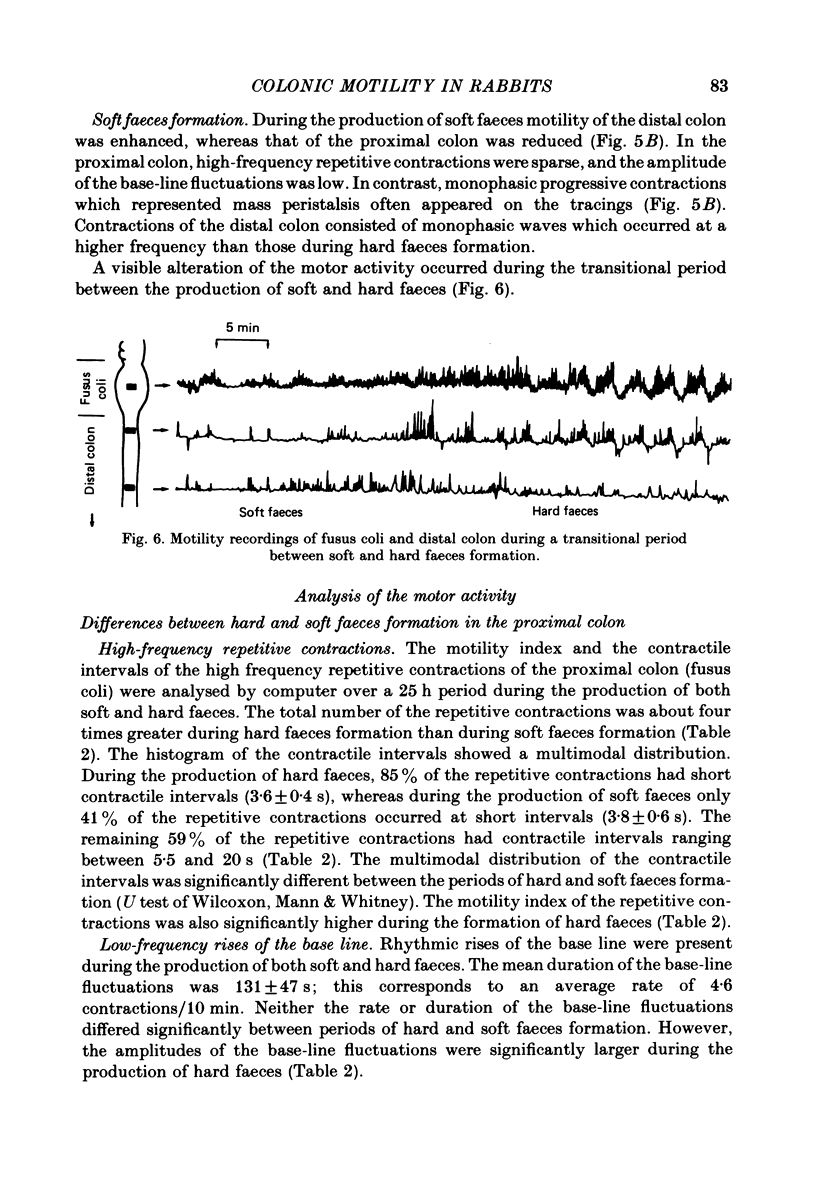
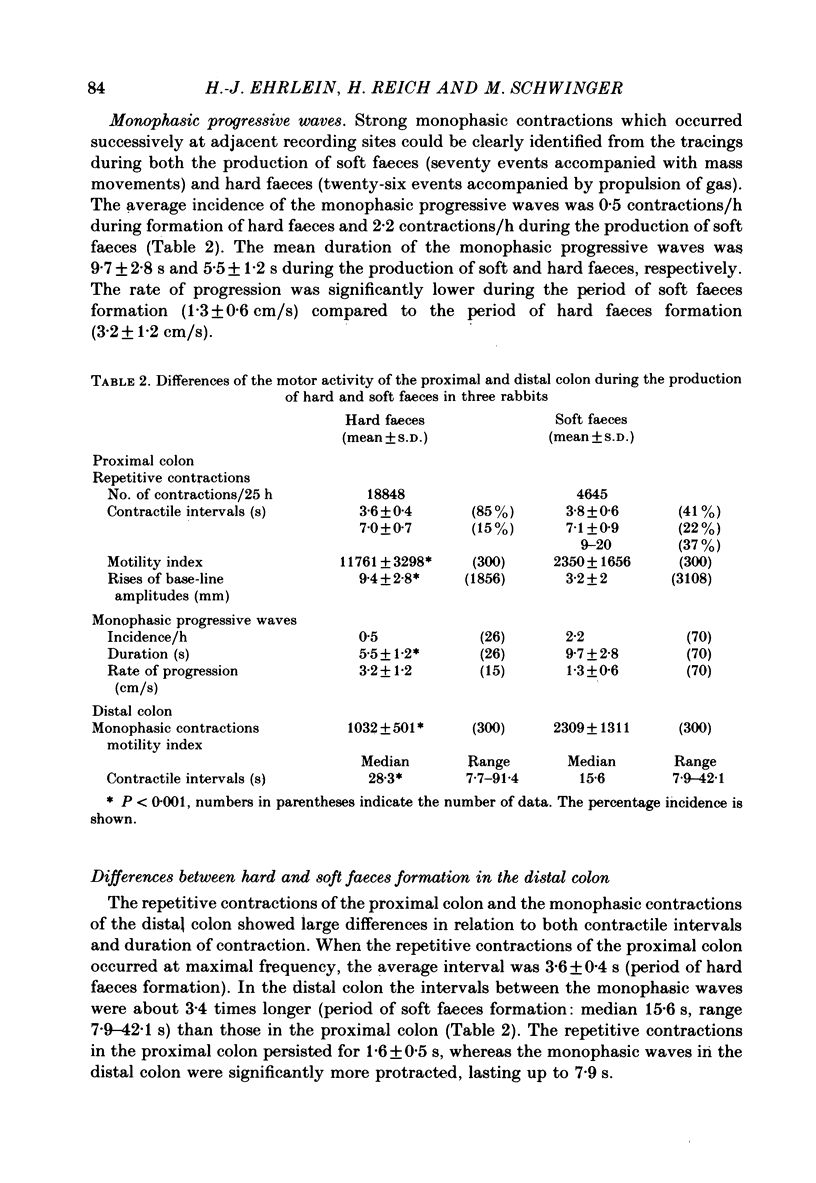
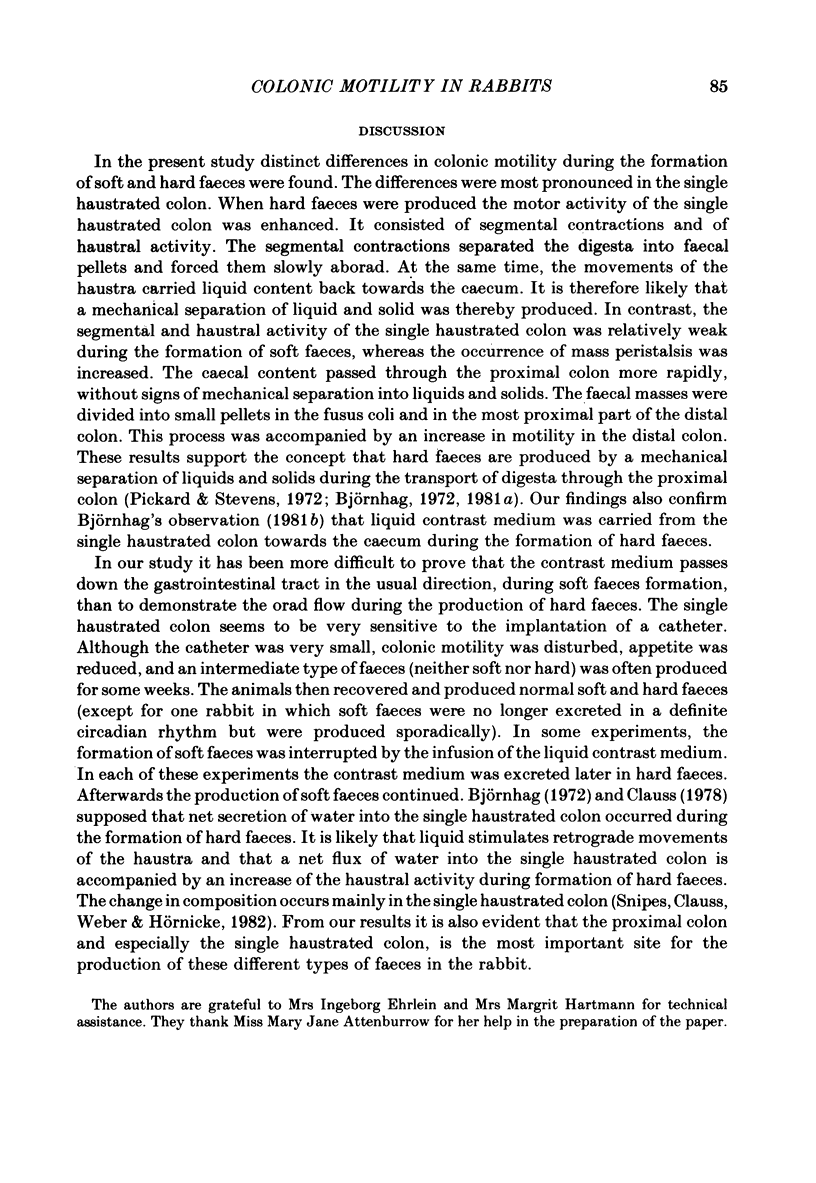
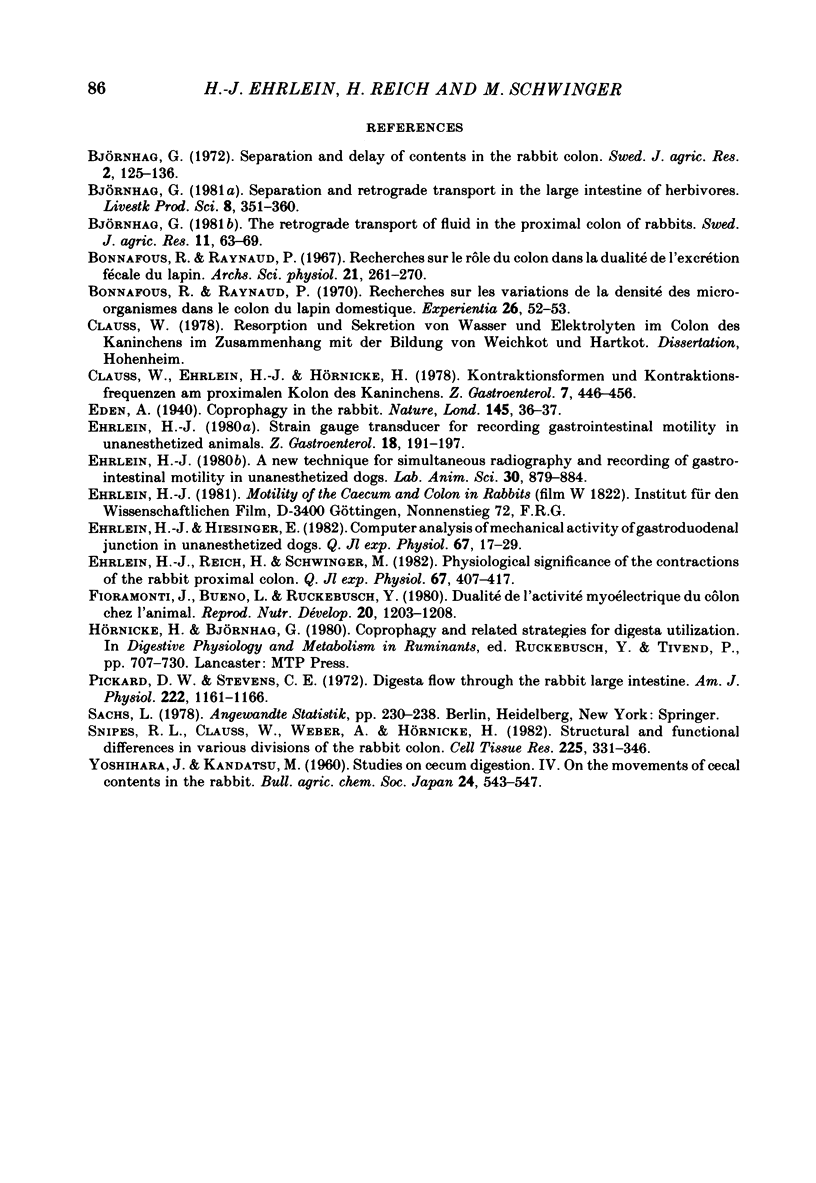
Selected References
These references are in PubMed. This may not be the complete list of references from this article.
- Bonnafous R., Raynaud P. Recherches sur le rôle du côlon dans la dualité de l'excrétion fécale du lapin. Arch Sci Physiol (Paris) 1967;21(3):261–279. [PubMed] [Google Scholar]
- Bonnafous R., Raynaud P. Recherches sur les variations de la densité des microorganismes dans le colon du lapin domestique. Experientia. 1970 Jan 15;26(1):52–53. doi: 10.1007/BF01900387. [DOI] [PubMed] [Google Scholar]
- Clauss W., Ehrelin H. J., Hörnicke H. Kontraktionsformen und Kontraktionsfrequenzen am proximalen Kolon des Kaninchens. Z Gastroenterol. 1978 Jul;16(7):446–456. [PubMed] [Google Scholar]
- Ehrlein H. J. A new technique for simultaneous radiography and recording of gastrointestinal motility in unanesthetized dogs. Lab Anim Sci. 1980 Oct;30(5):879–884. [PubMed] [Google Scholar]
- Ehrlein H. J., Reich H., Schwinger M. Physiological significance of the contractions of the rabbit proximal colon. Q J Exp Physiol. 1982 Jul;67(3):407–417. doi: 10.1113/expphysiol.1982.sp002656. [DOI] [PubMed] [Google Scholar]
- Fioramonti J., Bueno L., Ruckebusch Y. Dualité de l'activité myoélectrique du côlon chez l'animal. Reprod Nutr Dev. 1980;20(4B):1203–1208. [PubMed] [Google Scholar]
- Pickard D. W., Stevens C. E. Digesta flow through the rabbit large intestine. Am J Physiol. 1972 May;222(5):1161–1166. doi: 10.1152/ajplegacy.1972.222.5.1161. [DOI] [PubMed] [Google Scholar]
- Snipes R. L., Clauss W., Weber A., Hörnicke H. Structural and functional differences in various divisions of the rabbit colon. Cell Tissue Res. 1982;225(2):331–346. doi: 10.1007/BF00214686. [DOI] [PubMed] [Google Scholar]


